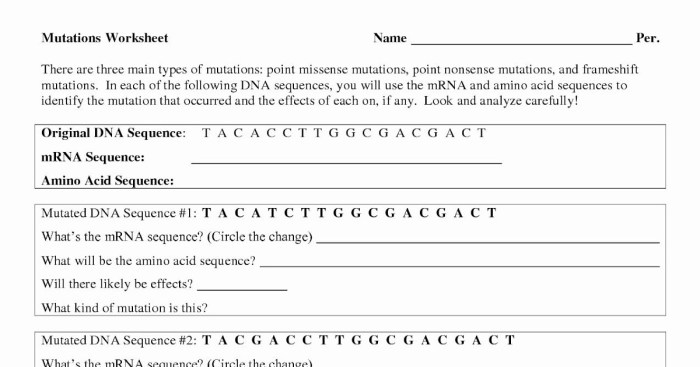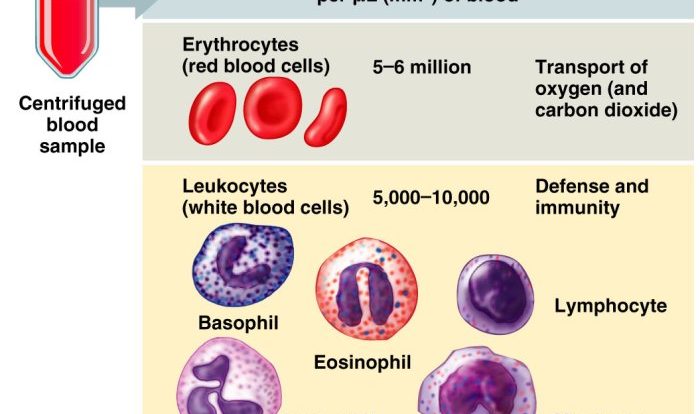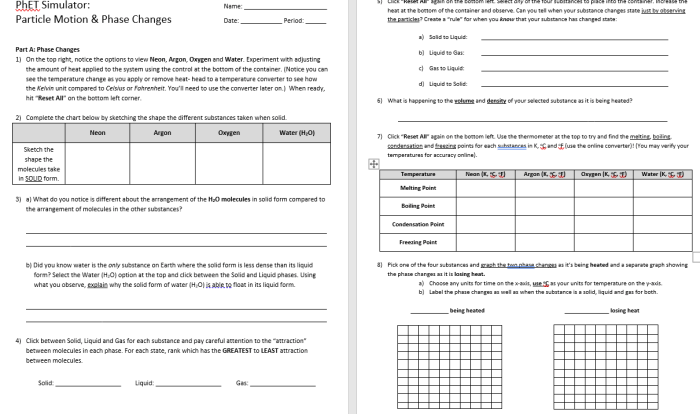Embark on an educational journey with our DNA mutation simulation worksheet answers pdf, a valuable resource that unlocks the complexities of DNA mutations. This comprehensive guide empowers educators and students alike, providing a deep understanding of the topic.
Our worksheet delves into the fundamental concepts of DNA structure and function, unraveling the intricacies of DNA mutations and their diverse types. Through engaging activities and in-depth analysis, we illuminate the causes and consequences of these genetic alterations, fostering a profound appreciation for the dynamic nature of DNA.
DNA Mutation Simulation Worksheet Overview: Dna Mutation Simulation Worksheet Answers Pdf
The DNA Mutation Simulation Worksheet is an educational tool designed to provide students with a hands-on understanding of DNA mutations. It aims to help students comprehend the types, causes, and consequences of DNA mutations, as well as develop their analytical skills through simulation exercises.
The worksheet is suitable for students with a basic understanding of DNA structure and function. It is particularly relevant for students in biology, genetics, and molecular biology courses.
Background on DNA Mutations

DNA, or deoxyribonucleic acid, is a molecule that carries genetic information in the form of a code made up of four different nucleotides: adenine (A), thymine (T), cytosine (C), and guanine (G). These nucleotides are arranged in a specific sequence along the DNA molecule, forming genes that provide instructions for the development and functioning of an organism.
DNA mutations are changes in the nucleotide sequence of DNA. They can be caused by a variety of factors, including environmental factors such as radiation and chemicals, and errors during DNA replication.
Mutations can be classified into different types based on their size and effect. Point mutations involve changes in a single nucleotide, while insertions and deletions involve the addition or removal of nucleotides, respectively. Mutations can have varying consequences, ranging from having no effect to causing genetic disorders or even cell death.
Worksheet Activities, Dna mutation simulation worksheet answers pdf
The DNA Mutation Simulation Worksheet consists of three main parts:
Part A: Understanding Mutations
In this part, students create a table to summarize different types of mutations, their descriptions, and examples.
Part B: Simulating Mutations
In this part, students create a simulation model to introduce mutations into a DNA sequence. They learn how to simulate different types of mutations, such as point mutations, insertions, and deletions.
Part C: Analyzing Results
In this part, students analyze the simulated mutations to calculate mutation rates and identify potential effects. They discuss the implications of different types of mutations and how they can affect the organism.
Answer Key
The answer key provides guidance for completing the worksheet activities. It includes:
Part A: Understanding Mutations
A completed table with accurate information on mutation types, descriptions, and examples.
Part B: Simulating Mutations
Guidance on setting up the simulation model and simulating different mutation types effectively.
Part C: Analyzing Results
Insights into interpreting the simulation results, including calculating mutation rates and assessing potential effects.
Additional Resources
The worksheet also provides a list of additional resources for further exploration of DNA mutations and simulation techniques. These resources include:
- Websites with interactive simulations and animations of DNA mutations
- Articles and videos explaining the causes and consequences of DNA mutations
- References to scientific studies and educational materials that support the content of the worksheet
Helpful Answers
What is the purpose of the DNA mutation simulation worksheet?
The worksheet aims to enhance understanding of DNA mutations, their types, causes, and consequences.
Who is the target audience for the worksheet?
Educators and students with an interest in genetics and molecular biology.
What types of mutations are covered in the worksheet?
Point mutations, insertions, and deletions.
How does the simulation model work?
It introduces mutations into a DNA sequence, allowing learners to observe the effects of different mutation types.
What are the benefits of using the worksheet?
It promotes active learning, critical thinking, and a deeper understanding of DNA mutations.

